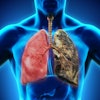
Coronary artery calcium (CAC) scores derived from cardiac CT scans may offer useful information when it comes to assessing patients for risk of cardiovascular disease (CVD), according to a literature survey study published April 25 in JAMA Internal Medicine.
But clinicians must discern if the benefit of adding CT CAC data for CVD risk evaluation outweighs the downsides -- such as radiation exposure and the potential for further, perhaps unnecessary testing, wrote a team led by Katy Bell, PhD, of the University of Sydney in Australia.
"[We found] the mean discrimination gain [of adding CT CAC scoring data] is modest, but may be important for some subgroups," the authors noted.
In 2018, the U.S. Preventive Services Task Force (USPSTF) stated that evidence is insufficient to recommend adding CT CAC score information to other measures of risk assessment for cardiovascular disease in asymptomatic adults, the group noted. But although no trials have demonstrated definitively that using CAC data can reduce future cardiovascular disease events, CT CAC scans have become increasingly common in clinical practice, raising concerns about patients being unnecessarily exposed to radiation and prompting a "cascade" of further testing that may not be needed.
Bell's group sought to explore the pros and cons of adding CT CAC data to cardiovascular disease assessment via a review that consisted of six studies that included 1,043 CVD events in 17,961 individuals. Three of the studies were from the U.S., one from Germany, one from the Netherlands, and one from South Korea, and the number of participants in each study ranged from 470 to 5,185.
CVD risk was calculated using the following tools: The U.S.'s Framingham Risk Score, Cardiovascular Risk Score (QRISK), or pooled cohort equation, and New Zealand's PREDICT, Norway's NORRISK, or the Netherland's SCORE.
The team found that among those study participants categorized as low risk by a cardiovascular disease risk score tool and recategorized as intermediate or high risk by CT CAC results, 85.5% to 96.4% did not experience an adverse cardiovascular disease-related event during follow-up. But the review also found that, among those study participants categorized as high risk by a CVD risk score tool and reclassified as low risk following CT CAC results, 91.4% to 99.2% did not experience an adverse CVD event during follow-up.
The review results indicate that there's not a strong impetus to add CT-generated CAC data to cardiovascular disease risk calculation, Dr. Robert Gallo of Stanford University and Dr. David Brown, an internist in St. Louis, wrote in an accompanying editorial.
"The work by Dr. Bell and colleagues adds an important update to the literature on the limited influence of [CAC scores] on model discrimination and contributes to existing questions and concerns regarding its role in primary prevention screening," they wrote. "Until ongoing outcomes studies indicate a clinical benefit of [CAC score] screening to counterbalance potential harms, we agree with the [USPSTF] and believe that adherence to the ancient medical dictum, primum non nocere, should dictate a pause in adding [CAC score] screening to standard clinical risk models for primary prevention of CVD."





















